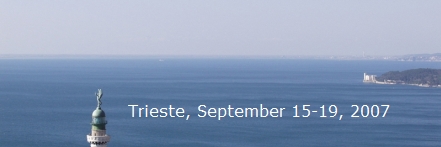|
|
 |
|
|
|
|
|
|
|
has
had a long and interesting history
Roman:
The
site of several "castellieri", or walled villages, the Karst and the
coast below it were already strategically placed at a crossroad between
east and west, north and south.
On the hill of San Giusto, Tergeste
(m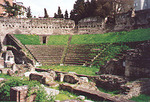 arket-town
in Paleo-Venetian) became a Roman colony in 52 BC. The Roman theatre still remains, but its open
view on the sea has been unfortunately blocked by the Police
headquarters... arket-town
in Paleo-Venetian) became a Roman colony in 52 BC. The Roman theatre still remains, but its open
view on the sea has been unfortunately blocked by the Police
headquarters...
|
Medieval:
The
hill of San Giusto, with its cathedral,
was connected to the harbor, in what is now the old city, while to the
nor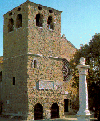 th
lay the salt ponds. A keen
sense of municipal pride was not sufficient to guard little Trieste
from the violence of its neighbours, particularly greedy Venice, and in
1382 AD the city sought protection by pledging submission to the
Hapsburgs. th
lay the salt ponds. A keen
sense of municipal pride was not sufficient to guard little Trieste
from the violence of its neighbours, particularly greedy Venice, and in
1382 AD the city sought protection by pledging submission to the
Hapsburgs.
|
Commercial:
At the
beginning of the XVIII century, the Hapsburgs decided to make Trieste
into the main harbor of their empire, declared it a duty-free port, and
built a modern town over the
salt p onds. Traders flocked in from all
corners of Europe and the Mediterranean, Greeks, Turks, Jews, Slavs,
Hungarians, the population swell from 5,000 to 200,000 and made the
city appear, to Karl Marx, the New York of the Adriatic. onds. Traders flocked in from all
corners of Europe and the Mediterranean, Greeks, Turks, Jews, Slavs,
Hungarians, the population swell from 5,000 to 200,000 and made the
city appear, to Karl Marx, the New York of the Adriatic.
|
Literary:
James Joyce, who lived in Trieste
the first ten years  of his self-imposed exile, and Italo Svevo, of his self-imposed exile, and Italo Svevo, who from his much younger and more self-confident English teacher came
to appreciate his own literary talent, are but two of the many writers
whose diverse life trajectories interected with the busy affairs of
Trieste.
who from his much younger and more self-confident English teacher came
to appreciate his own literary talent, are but two of the many writers
whose diverse life trajectories interected with the busy affairs of
Trieste.
|
Tragic:
After
the first World War, Trieste and Istria became part of Italy, soon
taken over by Fascist rule. Fascism's forced Italianization of the
Slavic population was to be only a prelude to the horrors of the second
World War. In 1943 the region was annexed to the German Reich. The Risiera di San Sabba 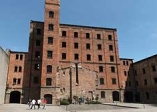 was used as a transit station for Jews and many others to be sent to Auschwitz and, equipped with a crematorium,
the only one in Italy, for the direct extermination of partisans and
civilian hostages. was used as a transit station for Jews and many others to be sent to Auschwitz and, equipped with a crematorium,
the only one in Italy, for the direct extermination of partisans and
civilian hostages.
|
Scientific:
Trieste's
modern renaissance came from an unexpected side: science. Besides ICTP
and SISSA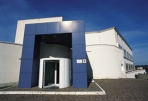 , who are hosting the meeting, several other international scientific
institutions, like the International
Centre for Genetic Engineering and Biotechnology, along with the
University, attract thousands of scientists to spend from days to years
in Trieste, making it the European region with the highest percent of
scientists in the population. , who are hosting the meeting, several other international scientific
institutions, like the International
Centre for Genetic Engineering and Biotechnology, along with the
University, attract thousands of scientists to spend from days to years
in Trieste, making it the European region with the highest percent of
scientists in the population.
|
Practical info
|
Wireless web access will be available at Miramare (at the
registration desk upon their arrival, participants will be given an
envelope with their private temporary usernames and passwords).
Remember to check you have adaptors for Italian plugs (this ICTP
webpage
gives you the details).
|
|
|
|
|
 |
 |
 |
EBBS Committee
|
|
Giorgio Innocenti
(Stockholm, Chair)
|
|
Martine Ammassari-Teule
(Rome, Secretary)
|
|
Melly Oitzl (Leiden,
Treasurer)
|
|
Katharina Braun
(Magdeburg)
|
|
Carmen Cavada
(Madrid)
|
|
Francesca Cirulli
(Rome)
|
|
Shane O'Mara (Dublin)
|
|
Bruno Poucet
(Marseille)
|
|
Fotini
Stylianopoulou (Athens)
|
|
Andrzej Wrobel
(Warsaw)
|
|
|
 |
 |
Local
Organizers
|
|
Alessandro Treves (SISSA)
|
|
P. Paolo Battaglini
(Trieste)
|
|
Leonardo Chelazzi
(Verona)
|
|
Mathew Diamond
(SISSA)
|
|
Giorgio Vallortigara
(Trieste)
|
 |
 |
The Office
|
 |
|
|
